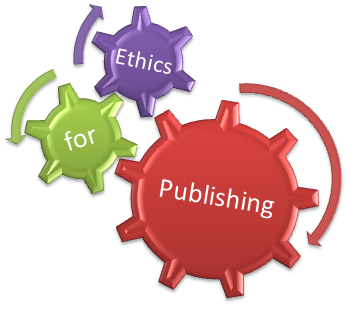The Mechanism of Hydrogen Bubble Formation Caused by the Super Hydrophobic Characteristic of Taro Leaves
(*) Corresponding author
DOI: https://doi.org/10.15866/ireme.v11i2.10621
Abstract
This study is aimed at uncovering the mechanism and role of the super hydrophobic characteristic of taro leaves on the process of hydrogen gas formation when there is a contact with a water droplet. The investigation was organized as: SEM-EDX analysis on the surface of taro leaf, observation on gas bubbles within a water droplet on the surface of taro leaves, and the detection of hydrogen gas production. The study result shows that the super hydrophobic characteristic of taro leaves caused the formation of great contact angle and high surface tension energy in droplets. A pointed-shaped nano texture caused the tension energy of the droplet surface to increase. As a result, particles randomly vibrate triggering the reaction between H2O droplets and Mg, K, and Ca on the surface of leaves producing hydrogen gas bubbles. Some gas was trapped in the nano grooves on the leaves surface and some with high pressure broke through the droplet and then were driven out by the Brownian motion.
Copyright © 2017 Praise Worthy Prize - All rights reserved.
Keywords
References
Dean B, Bhushan B, (2010), Shark-skin surfaces for fluid-drag reduction in turbulent flow: A review. Philosophical Transactions of the Royal Society A, 2010, 368, 4775–4806.
http://dx.doi.org/10.1098/rsta.2010.0201
Bhushan, B., (2009), Biomimetics: lesson from nature-an overview, Phil. Trans. R. Soc. A (2009) 367, 1445-1486.
http://dx.doi.org/10.1098/rsta.2009.0011
Bhushan, B., Jung, Y. C. & Koch, K. In press. Micro-, nano-, and hierarchical structures for superhydrophobicity, self-cleaning and low adhesion. Phil. Trans. R. Soc. A 367.
http://dx.doi.org/10.1098/rsta.2009.0014
Koch, K., Bhushan, B., Jung, Y. C. & Barthlott, W. In press b. Fabrication of artificial lotus leavesand significance of hierarchical structure for superhydrophobicity and low adhesion. Soft Matter.
http://dx.doi.org/10.1039/b818940d
Roach, P., Shirtcliffe, N. J. & Newton, M. I. (2008) Progress in superhydrophobic surface development. Soft Matter 4, 224–240.
http://dx.doi.org/10.1039/b712575p
Wang, S., Song, Y. & Jiang, L. (2007) Photoresponsive surfaces with controllable wettability. J. Photochem. Photobiol. C: Photochem. Rev. 8, 18–29.
http://dx.doi.org/10.1016/j.jphotochemrev.2007.03.001
Xia, F., et al, (2006) Dual-responsive surfaces that switch between superhydrophilicity and superhydrophobicity. Adv. Mater. 18, 432–436.
http://dx.doi.org/10.1002/adma.200501772
Bhushan, B. & Ling, X. (2008) Integrating electrowetting into micromanipulation of liquid. J. Phys. Condens. Matter 20, 485 009.
http://dx.doi.org/10.1088/0953-8984/20/48/485009
Barthlott, W. and Neinhuis, C., (1997), Purity of the Sacred Lotus, or Escape from Contamination in Biological Surfaces,Planta 202 (1997) 1-8.
http://dx.doi.org/10.1007/s004250050096
Wagner, P., et al, (2003), Quantitative Assessment to the Structural Basis of Water Repellency in Natural and Technical Surfaces, J. Exper. Botany 54 (2003) 1295-1303.
http://dx.doi.org/10.1093/jxb/erg127
Burton, Z. and Bhushan, B., (2006), Surface Characterization and Adhesion and Friction Properties of Hydrophobic Leaf Surfaces, Ultramicroscopy 106 (2006) 709-719.
http://dx.doi.org/10.1016/j.ultramic.2005.10.007
Bhushan, B., (2009), Biomimetics: Lessons from Nature – An Overview, Phil. Trans. R. Soc. A367 (2009) 1445-1486.
http://dx.doi.org/10.1098/rsta.2009.0011
Koch, K., Bhushan, B., and Barthlott, W., (2008), Diversity of Structure, Morphology, and Wetting of Plant Surfaces (invited), Soft Matter 4 (2008a) 1943-1963.
http://dx.doi.org/10.1039/b804854a
Koch, K., Bhushan, B., and Barthlott, W., (2009), Multifunctional Surface Structures of Plants: An Inspiration for Biomimetics (invited), Prog. Mater. Sci. 54 (2009a) 137-178.
http://dx.doi.org/10.1016/j.pmatsci.2008.07.003
Hans J. Ensikat., et al., (2011), Superhydrophonicity in perfection: the outstanding properties of the lotus leaf, Beilstein J. Nanotechnol. 2011,2,152-161.
http://dx.doi.org/10.3762/bjnano.2.19
R. Blossey, (2003), Self-cleaning surfaces- virtual realities, Nature Materials, 2 301 306.
http://dx.doi.org/10.1038/nmat856
Bhushan, B. dan Jung, Y.C., (2006), Micro and Nanoscale Characteriztion of Hydrophobic and Hydrophilic Leaf Surfase, Nanotechnology 17 (2006) 2758-2772.
http://dx.doi.org/10.1088/0957-4484/17/11/008
Muler, F., et al., (2007), Self-Cleaning Surfaces Using the Lotus Effect, in Handbook for Cleaning/Decontamination of Surfaces. 2007, Elsevier Science B.V.: Amsterdam. p. 791-811.
http://dx.doi.org/10.1016/b978-044451664-0/50024-3
Burton, Z. and Bhushan, B., (2005), Hydrophobicity, Adhesion, and Friction Properties of Nanopatterned Polymers and Scale Dependence for Micro- and Nanoelectromechanical Systems, Nano Lett. 5 (2005) 1607-1613.
http://dx.doi.org/10.1021/nl050861b
Koch, K. and H.-J. Ensikat, (2008), The hydrophobic coatings of plant surfaces: Epicuticular wax crystals and their morphologies, crystallinity and molecular self-assembly. Micron, 2008. 39(7): p. 759-772.
http://dx.doi.org/10.1016/j.micron.2007.11.010
Jianwei Ma, (2010), Impact of surface topography on colloid and bacterial adhesion, A thesis submitted in partial fulfulment of the requirements for the degree master of science, Rice University, Houston,Texas.
http://dx.doi.org/10.5353/th_b3862850
Jiadao Wang., et al., (2009), Investigation on hydrophobicity of lotus leaf: Experiment and theory, Plant Science 176 (2009) 687-695.
http://dx.doi.org/10.1016/j.plantsci.2009.02.013
Refbacks
- There are currently no refbacks.
Please send any question about this web site to info@praiseworthyprize.com
Copyright © 2005-2024 Praise Worthy Prize








